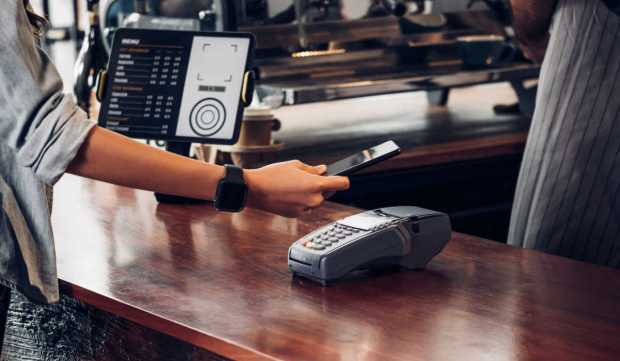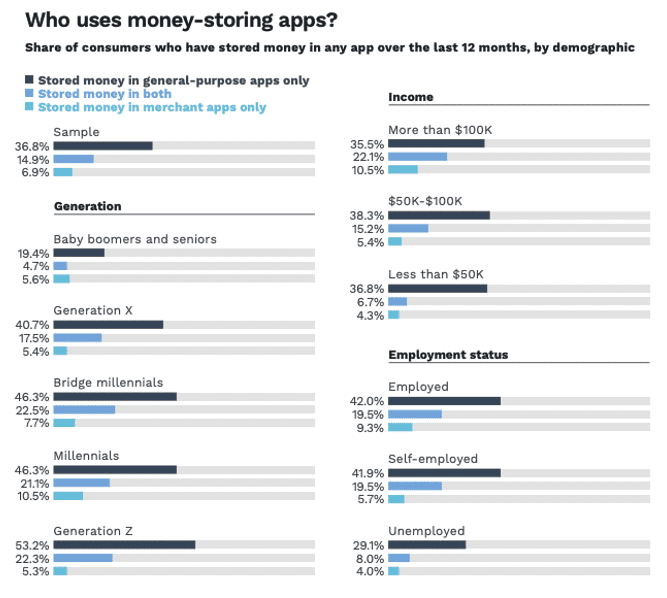37% of Consumers Store Money in Payments Apps

General-purpose and merchant money-storing apps are a compelling growth story of recent years, and the types of apps that consumers favor makes a fascinating focus in this story.
The topic is explored in-depth in the study “Money-Storing Apps Gain Favor With Consumers,” a PYMNTS and Treasury Prime collaboration, based on a survey of nearly 2,300 U.S. consumers.
As noted above, money-storing apps fall into two basic categories: general-purpose (think PayPal), and merchant-specific (think Starbucks).

“General-purpose apps have been met with a warmer reception than merchant-specific apps, with 37% of consumers having stored money in general-purpose apps only,” the study found. “[Peer-to-peer (P2P)] transfers are a big draw for these apps, with 76% of general-purpose app users using them to send and receive money in the last year and 71% using them to buy goods or services online.”
Only 7% of consumers currently store money in merchant apps, per the study.
However, 15% of consumers surveyed keep money in both types of apps, which speaks to the convenience and added perks of using money-storing apps for many consumers.
The use of money-storing apps is good news for retailers, as the research found that “consumers who load money at least once each week spend $300 more annually than those who load money less than monthly. Those who load money at least weekly load an average of $250 to general-purpose apps and spend $471 through those apps yearly. The same consumers loaded an average of $163 and spent $405 over the last year when using merchant apps.”
Overall, consumers trust PayPal to store their money in an app more than they trust their bank to store their money in an app. There are nevertheless some consumers who trust their banks more: the consumers who have either never stored their money in an app, or who have only stored their money in a merchant app. After PayPal and their banks, consumers most trust Visa, Mastercard, Apple, Amazon and American Express, in that order.
As to the increasing popularity of this payment method, the survey stated that “eight in 10 consumers who have used general-purpose money-storing apps for a variety of transactions — from P2P transfers to buying goods or services online — are interested in using those apps in the next 12 months, compared to only 15% of those who have not previously used them.”
In other words, once consumers try a money-storing app, their use of this payment method tends to increase appreciably. Rewards also entice users, as 37% of consumers who have never used one would be interested if offered incentives or discounts. It’s the same with general-purpose apps, as 18% of consumers who have not used money-storing apps before rises to 46% in using general-purpose apps if rewards are part of the equation.
